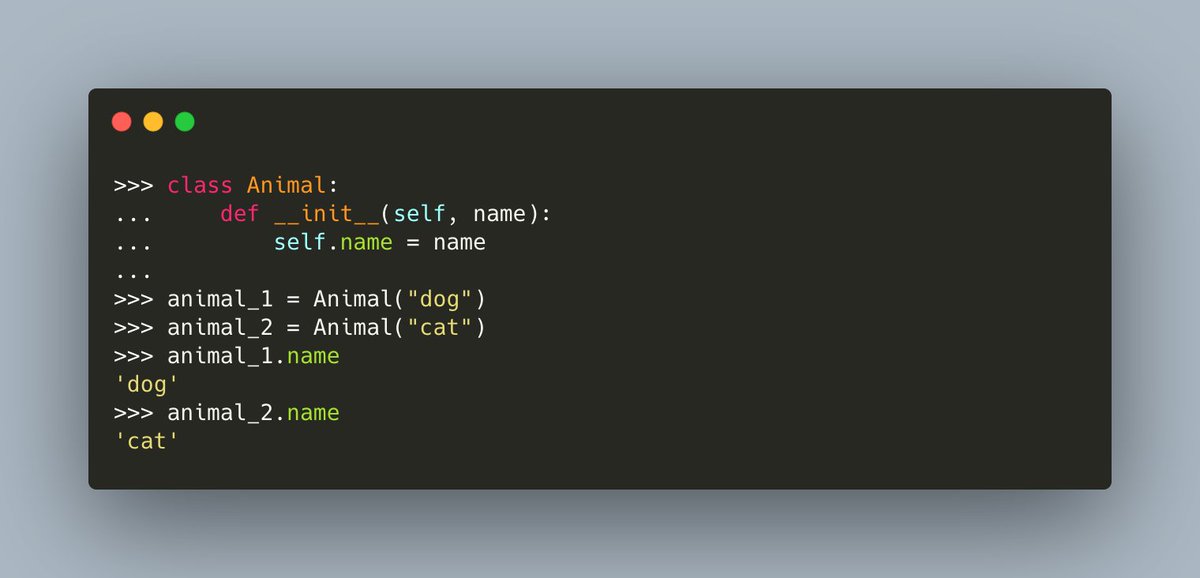
There are a lot of "magic methods" or "dunder methods" in #Python.
I'll be talking about these for a few days, so stay tuned!
First off is `__init__()` and `__repr__()`
I'll be talking about these for a few days, so stay tuned!
First off is `__init__()` and `__repr__()`
A magic method is a #Python class method that begins and ends with double-underscores
Most classes require you to create an `__init__()`
`__init__()` is short for initialization and initializes the instance
Most classes require you to create an `__init__()`
`__init__()` is short for initialization and initializes the instance

Sometimes, `__init__()` is called a constructor. However, I have seen it claimed that you need to combine `__new__()` with `__init__()` for it to be a true constructor
`__new__()` is used for allocating memory while `__init__()` is used for initializing the instance
`__new__()` is used for allocating memory while `__init__()` is used for initializing the instance
After creating an instance of a class, you may want to print it out.
If you do that, you'll see a rather obtuse result:
If you do that, you'll see a rather obtuse result:

Did you know you can control what is output when you print a class instance in #Python?
All you need to do is override `__repr__()`!
Here is an example:
All you need to do is override `__repr__()`!
Here is an example:

I have found that modifying the `__repr__()` is nice debugging trick. It allows me to see what the instance parameters are so I can figure out what's wrong with my code.
If you enjoyed this mini-thread on #Python's `__init__()` and `__repr__()` methods, go back to the beginning of this thread and share it with your friends.
Follow me to learn more about 🐍!
Follow me to learn more about 🐍!
• • •
Missing some Tweet in this thread? You can try to
force a refresh











